
Few things in golf can replicate the clean, scintillating aesthetics of a straight muscle-back blade. In the category of blade irons, Mizuno has long been recognized as a true industry leader. Both amateurs and professionals agree, there’s something special about Mizuno forgings. Case in point? Mizuno pays very few players to use their products on tour, yet you see them in the bags of pro players all across the world (cough, Brooks Koepka, cough cough). The latest line of Mizuno MP-20 irons continues that tradition of excellence.
The new MP-20 series includes 3 models:
MP-20 MB (Traditional Muscle Back Blade), MP-20 MMC (Multi-Material Concept), MP-20 HMB (Hot Metal Blade)

I've been fitting golfers into the MP-20 line for several months now, and I believe they offer a unique proposition to more skilled ball strikers. In this review, I'll explore each model and how I think it can fit into each golfer's bag.
Why Mizuno Has Been a Leader in the Iron Category For Decades
Here are some critical components to Mizuno’s long-time success in the iron business:
Ultra-High Quality Materials: Mizuno has a reputation for spending top-dollar on the materials they use to forge their golf clubs. 1025E Pure Select Steel (used in all 3 models) and Chromoly (in the HMB) are no exception. Mizuno engineers have dug all the way down to molecular structure to ensure their materials are the softest and strongest available for club construction.
Tireless Attention to Detail: Mizuno craftsmen in Hiroshima use a process called Grain Flow, High Density (HD) Forging to construct the MP-20 club heads. The Japanese facility has been making clubs for Mizuno for 30 years. That’s precisely the type of tenure and attention to detail that will yield unmatched results.
Impeccable Standards: There’s no such thing as the “Tour Issue” Mizuno product. If a club leaves Mizuno’s plant, it's good enough for you, for me, or for Brooks Koepka. Mizuno has one set of tolerances; clubs are either good enough to be called Mizuno, or they never see a golf course. Simple and impressive.
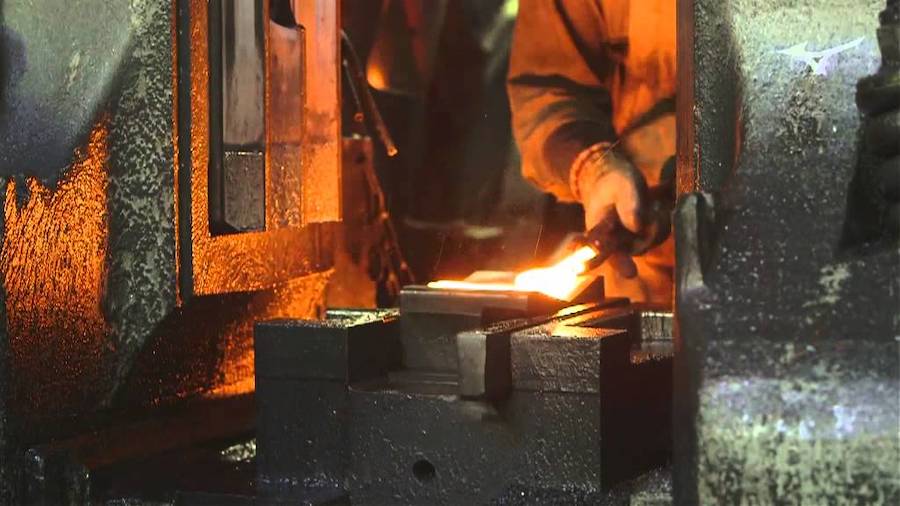
The New Hotness: Mizuno MP-20 HMB
The All-New Hot Metal Blade or Hollow Muscle Back, (both names have been embraced by Mizuno), is definitely the star attraction in the MP-20 line.
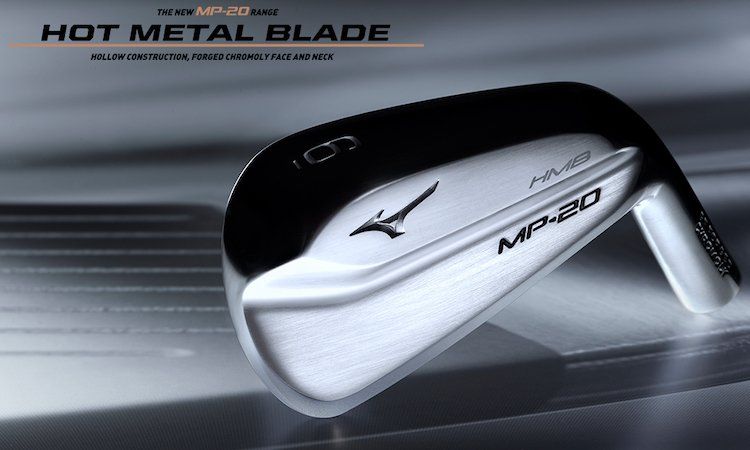
Designed for higher launch, enhanced stability, and increased ball speed, the Mizuno MP-20 HMB is something new in Mizuno’s forged iron category; here’s how they delivered.
- Forge the face (it is a Mizuno after all) but do so with Chromoly (a metal alloy) to increase strength. This allows for a thinner, faster face.
- Hollow the body between the Chromoly and the steel chassis of the club to maximize ball speed.
- Use tungsten weights deep in the heel and the toe to increase initial launch and drastically increase MOI (moment of inertia) and forgiveness.
- Underlay the head with copper to ensure that buttery soft Mizuno feel remains intact.
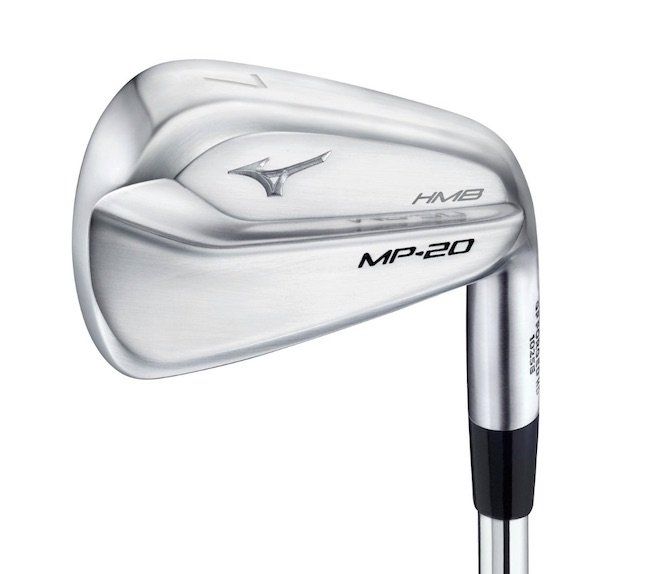
The idea behind the HMB offering is to deliver a Hybrid-like launch and forgiveness with the look and feel of a Mizuno blade. While this larger iteration of the MP-20 won’t be for everyone, it’s undoubtedly going to appeal to fans of both forged and forgiving irons. The look of the MP-20 HMB is notably larger than a traditional blade iron.

However, despite a thicker topline, its minimal offset and cleanly rounded toe are still desirable for perhaps an aging player who can benefit from a higher launching and more forgiving set.

Hollow Irons Are Not New, But Mizuno Did Something Different
Hollow iron heads are still relatively new to the market. The HMB is preceded by irons such as the Taylormade P790, Titleist TMB, Ping i500, and PXG’s.
But the science of creating ball speed through a thinner, unsupported “trampoline” face is far from perfect. Although I’ve only been fitting Mizuno MP-20 HMB for a couple of months, I’ve seen a much more balanced set of ball speed and spin numbers compared to TaylorMade P790’s results. The trouble with P790 and PXG irons has been that the ball doesn’t spin enough. Additionally, the faces hide a few “hot spots” that will sometimes lead to 10 or even 15-yard jumps in the distance on seemingly random strikes. No skilled player wants to juice an 8 iron 170 yards when he’s trying to hit it 155.
Along those same lines, I’ve had low ball hitters or players with lower clubhead speed struggle to stop even the mid irons in these low-spinning sets. For some players, we’re able to use a high launching/spinning shaft to mitigate the problem, but not everyone likes the feel of those softer tipped iron shafts. The MP-20 HMB irons have shown higher launch and spin numbers than P790, making it perhaps not as long but more consistent when it comes to distance and stopping power. If you’re looking for consistency and forgiveness in a forged package, and you have plenty of ball speed, MP-20 HMB may be right up your alley.
Another iron you could consider in this category is the Callaway X Forged CB.
A Pinch of This + A Dash of That = MP-20 MMC
Admittedly, I was not a big fan of the original 2018 version of the Mizuno MP-20 MMC (multi-material concept) club. But appearing in its second generation, I believe the MP-20 MMC is now one of the centerpieces of the Mizuno iron family. A refined forging process seamlessly integrates titanium into the 1025 Pure Select Steel chassis. Add in a tungsten weight for increased MOI, a copper underlay for further enhanced feel, and you’ve got the chemical formula for an excellent Iron.
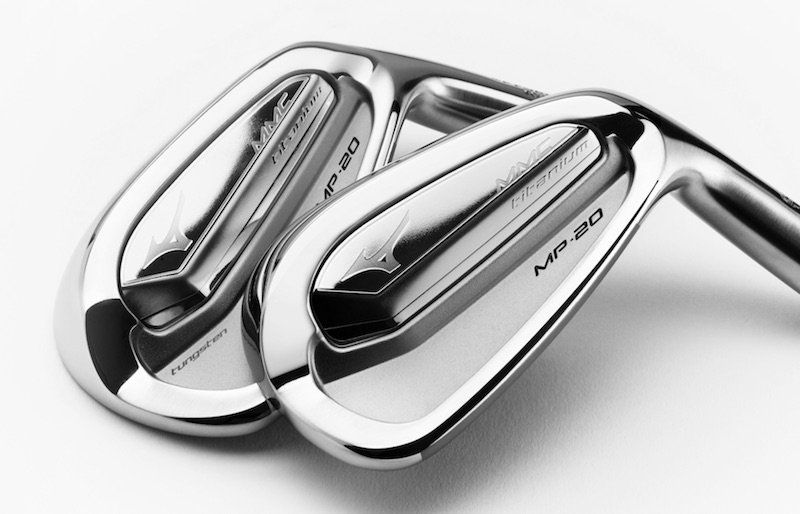
Truthfully these are materials we’ve seen in club designs before. What makes the MMC unique is that they didn’t place the tungsten too far away from the face to prevent an excessively high launch. Instead, they used it to increase perimeter weighting, which centered the sweet spot on the scoring lines and improved stability on off-center strikes.

When fitting high-skill players, I’ve often been forced to move into a blade iron simply because other models launched too high in the air. (I did this myself with my Titleist 714 MB’s). The MP-20 MMC gives me access to a tool that will deliver that penetrating launch without sacrificing the forgiveness that so many players need.
That being said, the MMC is still a player's iron, which I generally advise only low to mid handicappers to explore.
Muscle Up with the MP-20 MB Blade
When you’re taking a single piece of steel and pounding it into a traditional blade design, how much technology can you really apply? Mizuno gave it a shot with the MP-20 MB.
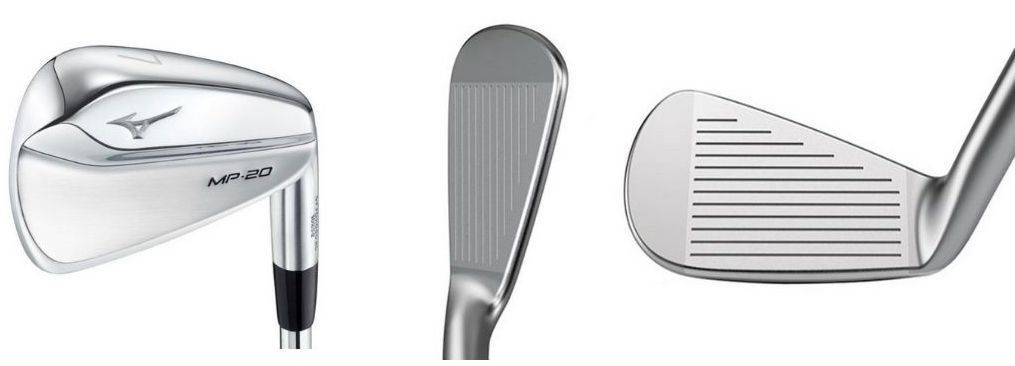
Here is what they did:
- Start simple, use the best materials available. Mizuno’s known for using higher-grade steel than almost anyone in the industry. I don’t know much about steel, but apparently, 1025E Pure Select is top-notch.
- Center up the sweet spot. You may have heard the adage that old-time blades' sweet spot was slightly in the heel of the clubface. This was true. The center of gravity of a blade is influenced by the weight of the hozel, drawing the purest strike point a smidge towards the heel. To correct this, Mizuno hedged the muscle weighting towards the toe and beautifully blended the look with the rest of the club. The sweetest of the sweet spots in the MP-20 MB is directly in the center of the scoring lines.
- Who says old fashioned blades can’t be progressive? Mizuno slightly shifts the CG through the MP-20 MB set to launch the shorter irons slightly lower and the longer irons slightly higher. It’s not something you’re likely to notice aesthetically, but it’s a feature you’ll enjoy when you’re hitting a wedge into the wind or a 5 iron into an elevated green.
- Don’t stray from your roots. Mizuno has long been known for creating soft, beautiful, workable blades. The MP-20 is no exception. High handicappers steer clear, players only in this model.
Mixing Things Up: The Ideal Blend for Your Game
If you follow players on the major tours, you’ve likely noticed that there are a lot of blended iron sets in play these days. Beyond replacing long irons with hybrids, players are now replacing long or even mid irons with a more forgiving and/or higher launching head. The tricky part about doing this as a fitter is navigating the ever-changing “standard” lofts in which iron sets are offered.
Mizuno has done a great job of keeping lofts reasonably consistent throughout their different sets. This makes blending the straight blade, the MMC, and the HMB sets virtually seamless. Want more control and a cleaner look in the short irons? 8-PW in MP-20 MB Blade. A little more help in 5-7 without sacrificing that blade look? MMC will work perfectly. Want to top things off with higher launching and more stable/forgiving long irons? 3 & 4 iron HMB’s will give you confidence on big par 3’s, make long iron approaches more consistent, and have you poised to split the fairway on tight driving holes.
Here is a video from Mizuno engineer Chris Voshall explaining how you can blend a set of MP-20s:
Final Thoughts on the Mizuno MP-20 Irons
Mizuno has done a fantastic job assembling the MP-20 iron lineup. And seeing as all good cakes need a healthy amount of icing, they offer dozens of shafts and grips at no upcharge. While the irons aren’t cheap (and shouldn’t be with the quality of materials and research you’re purchasing), Mizuno pledges to put you in the shaft and grip that fit your game the best at no additional charge.
As a clubfitter, I can vouch for the fact that this is a very rare offer. So get to a fitter and give the MP-20 line a try; you won’t regret it.
If you're interested in learning more about clubfitting, you can also read my iron fitting guide.
We care about the protection of your data Read our Privacy Policy